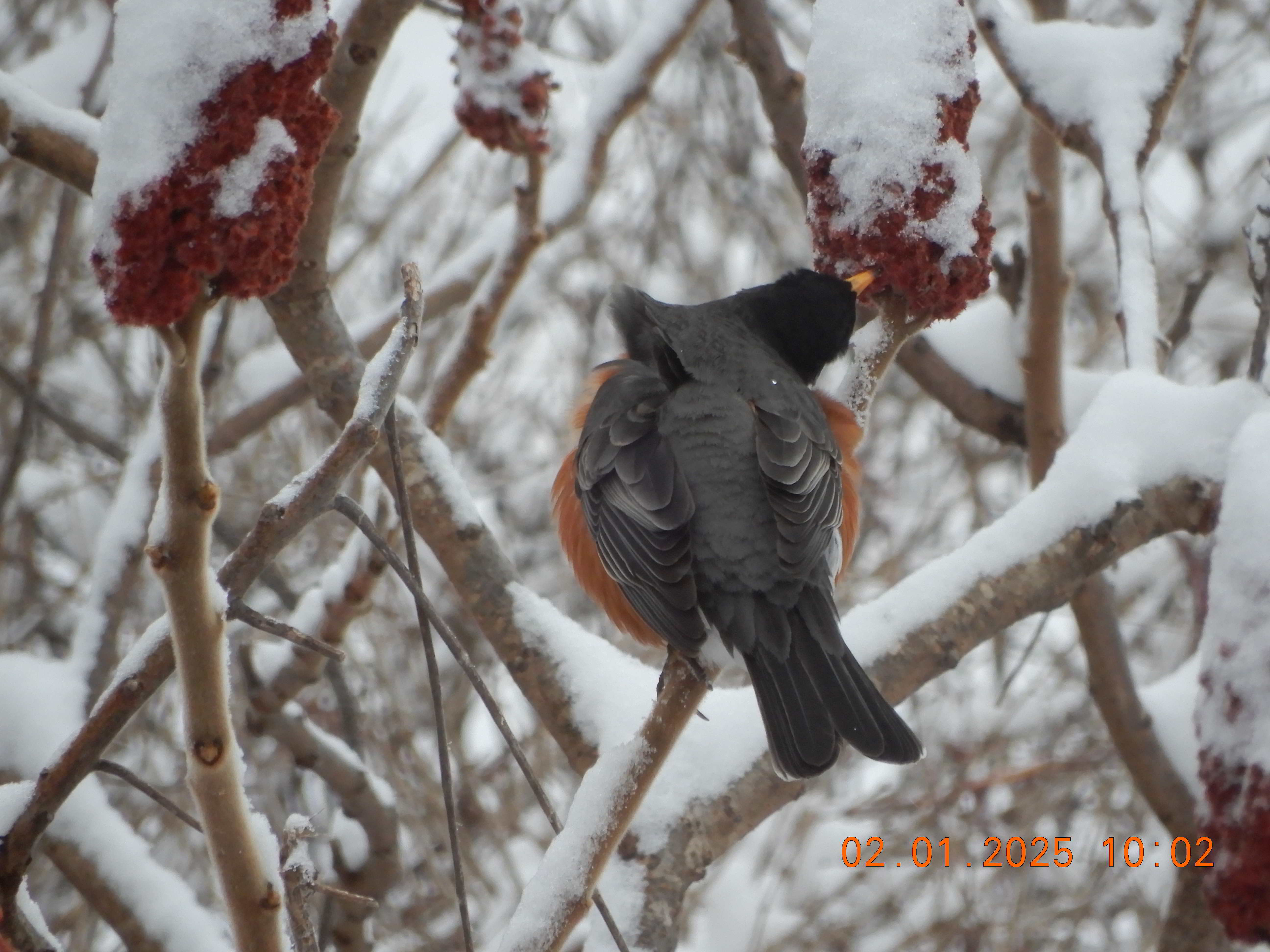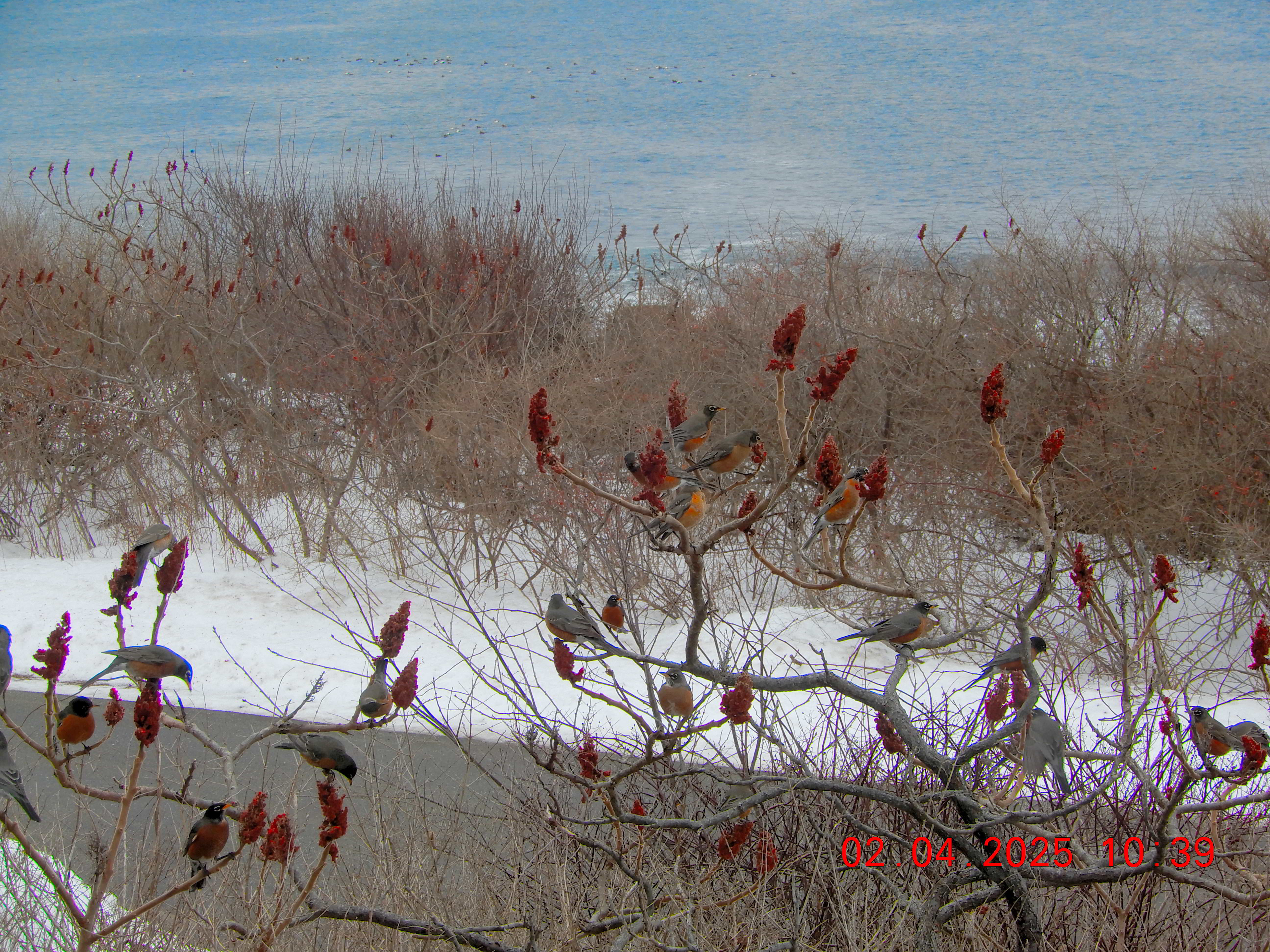As early as February first a large group of American Robins (Turdus migratorius) appeared, flitting about the island in groups of 50 or more. Early on, they seemed to keep to a pattern, visiting the Backshore in the morning, feeding on sumac seeds, and leaving around noon to greener pastures (backyards) across the island. Later in the month the robins were joined by European Starlings and House Finches on the Backshore, all feeding together on what remained of the sumac seeds. What brought these three bird species together, especially when the food was no longer in abundance. They have their reasons, but they were not ‘telling’.


Where did so many robins originate? Were they migrating locally in southern Maine or were they moving north in an early spring migration? Perhaps both.
A bird distribution map based on eBird data shows that some robins are year-round residents, however, in early February there are also early northerly movements of birds from the more southern states. The year-round residents may wander locally leaving depleted food sources in search of new ones. Migrating birds are looking for energy replacements as they continue their movement north. Some may stay as local breeding birds. Their species name, migratorius means ‘wandering” as well as ‘migratory”. Whether they are wandering or migrating, robins are considered harbingers of spring, and we welcome them. (1)
In mid-March these hungry birds were largely gone. Where did they go? Perhaps moving on to a new type of food? Completing their northerly migration? Looking for nest sites?
During the months of April and May robins were heard singing their melodious songs along Florida Avenue near Battery Steele and near the ABC Trail. Although, no nests were seen, we suspect and hope they are raising young birds here.
1. Cornell Lab. Birds of the World. (On line)
2. eBird
By: Patty Wainright
Reviewed by: Sam Wainright
